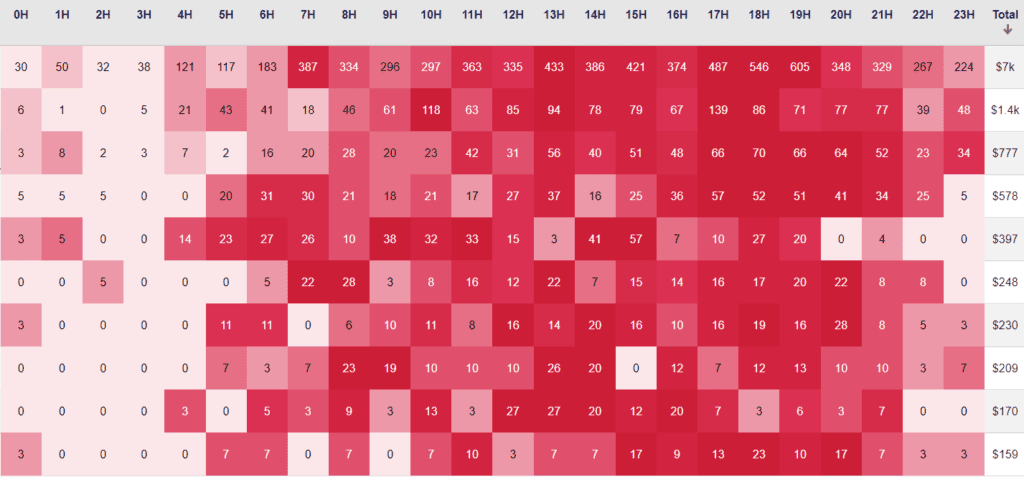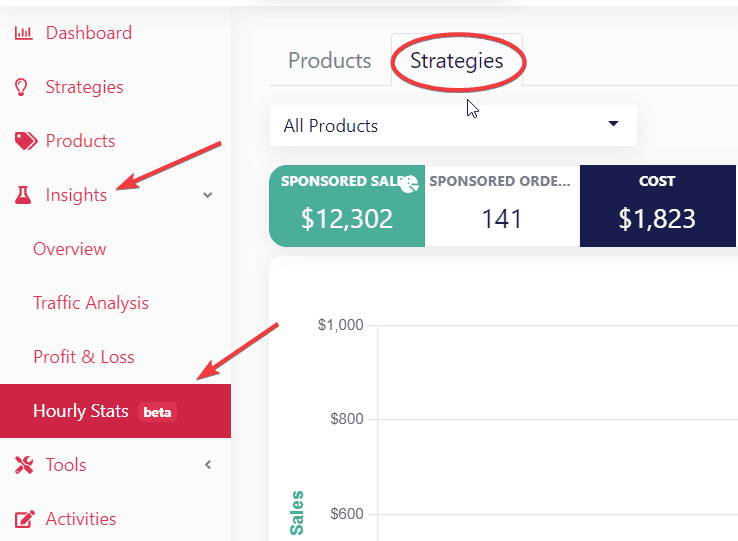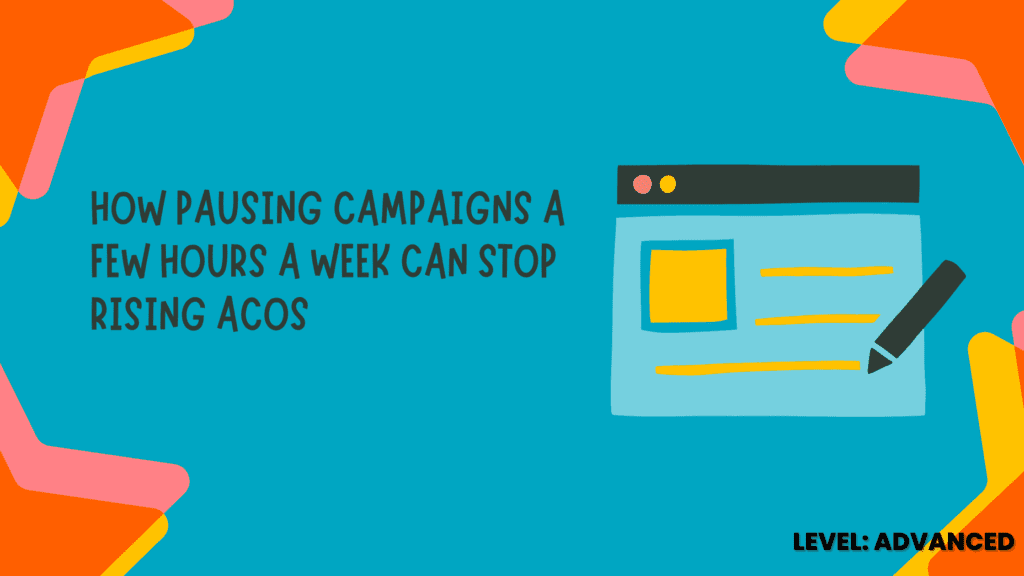The short and skinny on day-parting
The concept of dayparting isn’t new to Amazon as it’s been at least a year or more since they introduced the ability for PPC ads. The feature has existed even longer still outside of Amazon in ppc platforms such as Facebook and Google Ads.
But what is it? What does it mean to daypart or weekpart your ads?


Get Our Internal Amazon Listing Optimization Operating System and increase conversions by 18%+ HERE 👇
Dayparting refers to pausing ads during certain parts of the day or week. Basically, you only run your ads during periods of the day or week where your target audience is most likely to be available to engage or choose to take advantage of your offer.
The purpose of this is to reduce ad impressions (and clicks) during time periods where ideal customers are not active or are unable to buy your product. This is another optimization tactic to reduce ad spend except for during timeframes where conversions are most likely to occur.
Who Uses Dayparting?
Let’s give some hypothetical examples…
Say you sell an office supply and the majority of your customers are corporate offices placing semi-bulk orders. You may observe that sales don’t tend to occur on the weekends (and this would make sense) so turning ads off for the weekends might help save on wasted adspend.
Or, let’s say you sell a baby product and the bulk of your customers are stay-at-home moms who are shopping before the kids get home from school. You may observe that sales slow down significantly after around 3PM (and this would make sense) so you decide to turn ads off in the evening until morning.
These are just two examples of when dayparting may be beneficial. Obviously to do this properly requires data, but this is a data-driven way to fully optimize your advertising spend.
Why Would Amazon Sellers Want To Use Dayparting?
The Amazon platform is a 24hr marketplace, so turning ads off during periods of the day may seem like a recipe for missed opportunity.
The truth is, dayparting is not for everyone, and you cannot wish to do it successfully without data to back it up. However, if you have a strongly seasonal product, or your target audience exhibits easily identifiable shopping patterns, dayparting could provide you with a leg up on taking control of your ad spend.
Take this example. Here using the Signalytics PPC dashboard we are looking at turning off ads all day for a specific day of the week. If we do so, we can see that in this instance we would save roughly $25 in ad spend but lose no sales opportunities.

Now, $25 may not seem like a lot, but this is an example of how dayparting works to optimize ad spend.
Here’s another reason why you may consider dayparting.
Stats show that about 65% of all purchases on the Amazon platform are made from a desktop browser. Furthermore, research shows that device usage changes typically based on time of day, with business hours having more desktop usage, and lunch breaks having more mobile usage (as an example).
If you wanted to get incredibly granular about when and where your money is being spent, then dayparting is an opportunity for you to optimize your ads using that data.
BUT…what about searches? Searches and purchases are different.
This is a fair point, and it also outlines the risks of dayparting. If your audience tends to do searches and research on their mobile device before committing to a purchase using their desktop or laptop, then optimizing only for desktop browser hours may reduce your sales.
That is why testing and evaluating new data is crucial.
It all comes down to knowing your customers and their daily habits as much as possible.
How Does Dayparting Work on Amazon?
It’s simple really. Campaigns are paused during periods specified and un-paused outside of those periods.
You can set this at campaign level . This means the ads in the campaign simply won’t be “on” and therefore competing for impressions during periods you’ve specified to turn them off.
Signalytics makes this easy to implement.
Here is the hourly calendar…

Here is where you gather the data to see what times of the day your PPC campaigns are actually bringing you sales. This data is critical. Here you can look at the data in real-time. See what time of the day you get sales. Also, with the export function, you can track over weeks and months to see how seasonal your product is and maximize optimization.
You may also choose to do some general research on the known shopping habits of your buyers by looking deeper into demographics that Amazon provides (under Brand Analytics > Demographics).



Surely your audience has stats you could Google for deeper insights. The key is identifying your audience and then you can determine their habits.
Once you have your audience insights and your hourly stats, if you choose “Strategies” you can simply double click the desired timeframe and set your dayparting from there.


Calculating If You Should Use Dayparting
The Signalytics dashboard does a great job of showing how much ad spend you would save versus how many sales you could make (based on historical data). However, this doesn’t make the choice to daypart or not to daypart so cut and dry.
See, unless there are entire days where you simply make no sales at all (certain days of the week where your audience just isn’t shopping for your product on Amazon), you’ll more than likely see that your lost sales potential is greater than your saved ad spend.

But you need to also consider what that additional ad spend would do to your ACoS. From an ACoS perspective, additional “lost sales” may be worth it if you are paying less for the sales you do make and you aren’t running out of budget at critical times.
Potential Downsides To Dayparting
Aside from the risks mentioned earlier, here are a couple of other points to consider…
1. You may forget to turn dayparting off for seasons like Black Friday where you could get sales from very early morning.
2. If you don’t have a large enough data set you may be operating on false data, I.E daylight savings.
3. If you just turn off campaigns you will never have that data during those hours. The more ideal situation is to lower bids during those hours instead of turning them off.
All in all dayparting is not a perfect solution to the challenge of optimizing ad spend. It is, however, another potential tool for certain products. The most obvious benefit is for those sellers who have days of the week that never get sales. Turning off those days may benefit the ad budget significantly.
Whether you choose to daypart or weekpart your ads, gathering the data necessary to make an informed decision is highly recommended. That is why Signalytics is dedicated to providing the most useful and in-depth data to Amazon sellers and brand owners.

